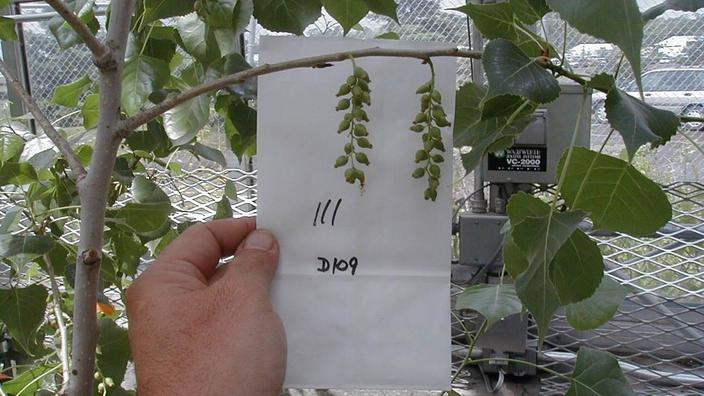 |
The University of Minnesota received a $1 million grant from the U.S. Department of Agriculture for 4 years to expand research on fast-growing hybrid trees and promote industrial use. The University’s Natural Resources Research Institute (NRRI), Forestry Extension and Dept. of Applied Economics are teaming up on the project to meet the future demand of biomass resources.
"This is very futuristic, very anticipatory,” explained NRRI forest scientist Neil Nelson. “But when the economics line up to further develop bio-based fuels and other bioproducts, we will have the feedstock.”
NRRI has been working for 20-plus years to develop hybrid poplar tree families that are a cross-breed of local, native cottonwood and European black poplar. These trees can reach maturity in about 10 years, as opposed to a typical aspen which would take about 40 years to grow the same size. They are grown as an agricultural crop, not in a forest, and require intensive weed management to survive.
The grant will allow NRRI to test the trees’ growth success in varying environments: northern Minnesota, central Iowa and southern Indiana.
“It’s important to understand how well they grow across broader landscapes,” Nelson added. “We’ve done some preliminary work on this with Purdue University and other organizations, but this will be a larger and more in-depth test.”
The funding will also support NRRI’s continued family field trials, clone trials and other tests that take place over a 5-year time span.
Mike Reichenbach at the University’s Regional Extension office in Cloquet, MN will develop an outreach program to potential industry stakeholders. Workshops and webinars will help wood products and bio-energy companies decide if hybrid poplars are viable for new or traditional products. Bill Lazarus, a University Applied Economist, will develop a Decision Support Tool to help landowners decide if hybrid poplars are a good crop for their land compared to other commodity crops like corn, soybeans or wheat.
“A good example of new bio-materials under development is NRRI’s work on lignin-based plastics,” said George Host, NRRI Forest & Land Initiative Director. “But traditional markets like pulp and paper are still out there.”
This study will quantify genetic advances to improve the economics of poplar feedstock plantations and reduce production and investment risk for farmers and industry stakeholders.
SOURCE: NRRI News article by June Breneman


